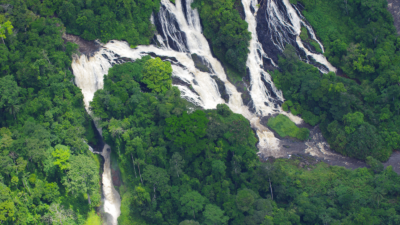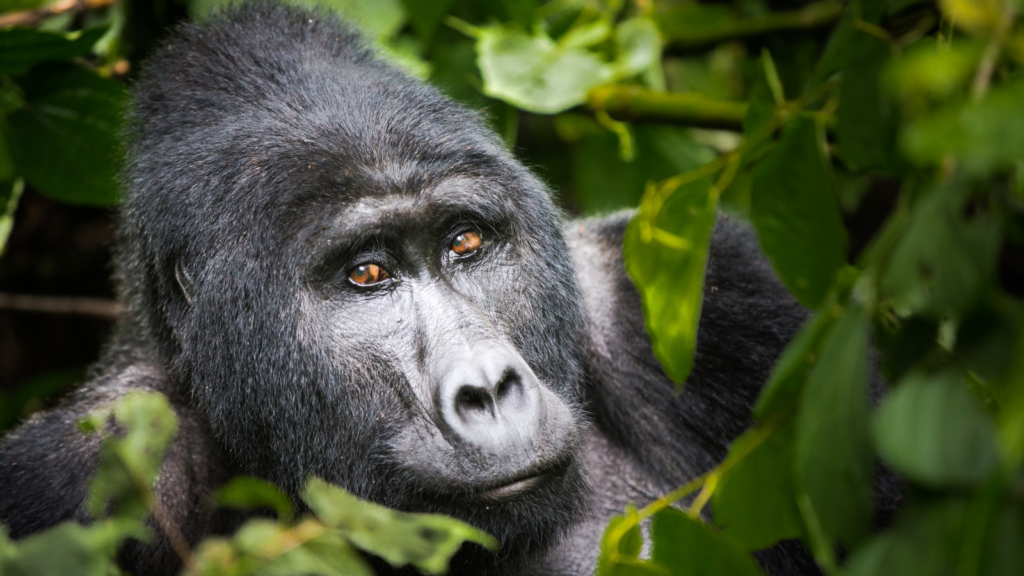
The Congo Basin, located in central Africa, is one of the most important wild places left on Earth. It is the world’s second largest rainforest and a biodiversity hotspot spanning six countries: Cameroon, the Central African Republic, the Democratic Republic of Congo, the Republic of Congo, Equatorial Guinea, and Gabon. It serves as a vital carbon sink, absorbing large amounts of carbon dioxide and helping to regulate the global climate.
However, it is under threat from human activities such as agriculture and industry, which are causing deforestation and disturbing the natural balance of the region’s ecosystems. According to satellite data analysis by Global Forest Watch, an initiative of the World Resources Institute, primary rainforest loss in the Congo Basin more than doubled between the first and second half of the period from 2002 to 2019. In 2019 alone, 590,000 hectares were lost (an area more than half the size of Jamaica). While deforestation rates in the Congo Basin showed a downward trend from 2015-20, the basin still saw 2.2 million hectares of forest loss and 1.5 million hectares of forest degradation in that period. The expansion of agriculture and livestock farming is a major contributor to this deforestation, as is industrial activity such as logging, mining, and palm oil plantations. This loss of forest cover not only threatens the unique biodiversity of the region, but also has significant implications for climate change and the livelihoods of local communities who rely on the forests for their survival.
The One Forest Summit held in Libreville, Gabon in 2023, established a new fund to reward countries for “exemplary” action to protect their forests, safeguard their vital stocks of carbon and preserve their biodiversity, as it called for a “fair deal” between forested countries and the international community.
With the world facing a climate crisis, protecting the Congo Basin has never been more critical. Unfortunately, time is running out. Here is why urgent action is needed to prevent irreversible damage to this crucial ecosystem:
A haven for rare wildlife and plants


The Congo Basin is one of the largest unexplored forest ecosystems on the planet. Of the 400 million hectares that the basin comprises, about 200 million of them are covered by forest, with 90 percent being tropical dense forests. The forests and wetlands of the Congo Basin are home to an incredibly diverse range of plans and wildlife, many of which have yet to be discovered or studied by scientists. Endangered wildlife, including forest elephants, chimpanzees, bonobos, and lowland and mountain gorillas, inhabit the lush forests. About 400 other species of mammals, 1,000 species of birds and 700 species of fish can also be found here, with many of these wild animals found nowhere else on Earth. There are about 10,000 known species of tropical plans in the basin, and about a third of these species are unique to the region.
A crucial carbon sink under threat


The Congo Basin is often referred to as the “lungs of Africa” due to its immense capacity to absorb and store carbon dioxide from the atmosphere. According to a recent study published in Nature, the Congo Basin rainforests absorb 370 million metric tons of the planet’s carbon emissions every year which is more than the Amazon rainforest. The carbon stored in the Congo Basin is crucial in mitigating the effects of climate change as it helps to reduce the amount of carbon dioxide in the atmosphere, which contributes to the warming of the planet. However, deforestation, mining, and other human activities are posing a significant threat to this critical ecosystem. It is important that efforts are made to protect the Congo Basin, and other vital carbon sinks around the world, to ensure the long-term sustainability of our planet.
A lifeline of freshwater, medicine, food and fisheries for millions of people


The Congo Basin is not only one of the world’s largest tropical rainforests but also one of the world’s largest terrestrial wetland ecosystems. The Congo River, which is the second-longest river in Africa, flows through the heart of the basin, providing food, water, medicine and transport to about 75 million people in the surrounding areas. The river is fed by numerous smaller rivers and streams that originate in the wetlands of the Congo Basin, which act as natural filtration systems, purifying the water and making it safe for human consumption.
In addition to providing freshwater for drinking and other domestic uses, these wetlands support irrigation for crops, which is essential for food production. Many of the crops grown in the region, such as rice, cassava, and maize, are water-intensive and rely on the abundant water supply provided by the basin.
The Congo Basin supports a variety of fisheries, which provide a crucial source of food and income to locals. The swamps, marshes, and floodplains in these wetlands are home to a diverse array of fish species, including catfish, tilapia, and lungfish, among others.
A wide variety of plant species found here have been used for medicinal purposes by local communities for centuries. Many of these plants contain compounds with known medicinal properties, and some of them have been used in traditional medicine systems. The bark of the African cherry tree has been used to treat prostate cancer, while the root of the African ginger is used to treat stomach ailments. The leaves of the Madagascar periwinkle are used to treat leukemia, while the bark of the African peach is used to treat malaria and fever. In addition to these traditional uses, many of these plant species are now being studied by scientists for their potential in modern medicine, and have been shown to have anticancer, antimicrobial, and anti-inflammatory properties.
Great apes – a vital but vulnerable part of the forest ecosystem


The Congo Basin is not only home to one of the largest tropical rainforests on Earth, but also to the highest density of great apes in the world. These gentle giants share their forest with chimpanzees, bonobos and other primates. These dense forests provide the ideal habitat for primates, which are essential for maintaining the balance of the ecosystem. They help to regenerate the forest by spreading seeds of various plants through their dung. They also control the population of certain plant species by feeding on them. Moreover, they create clearings and paths in the forest that allow sunlight to reach the ground and also allow other animals to access food. By doing so, they enhance the diversity and productivity of their habitat. The Western Lowland Gorilla is one of the most endangered gorilla species in the world, and the Congo Basin is home to just over 100,000 of them. Gorilla populations are threatened by poaching, habitat loss, and disease. Conservation efforts are essential to protect these primates and the delicate ecosystems they inhabit, in order to ensure their long-term survival.
Mysteries of the forest


The Congo Basin is not only rich in biodiversity, but also in legends and mysteries. One of the most famous legends associated with the region is that of the Mokele-Mbembe creature, which is said to inhabit the swamps and rivers of the Congo Basin. The Mokele-Mbembe is a mythical creature that is often described as a large, long-necked dinosaur-like animal, similar to a brontosaurus or sauropod. According to local legend, the Mokele-Mbembe is a peaceful herbivore, but sightings of the creature have been rare and have never been scientifically confirmed. Despite numerous expeditions and searches, there is no conclusive evidence to prove the existence of the creature. Nevertheless, the legend of the Mokele-Mbembe has captivated the imagination of people around the world. The mystery and allure of the Mokele-Mbembe continue to fascinate both scientists and enthusiasts, making it one of the most intriguing legends of the Congo Basin.
Learn more about how you can get involved in forest protection efforts, from reducing your carbon footprint to supporting organisations and initiatives working towards preserving these invaluable natural resources.
Watch: Cutting carbon emissions and protecting biodiversity: Gabon issues carbon credits to help protect its forests
Stay in touch and get the latest WildAid updates.
SIGN UP